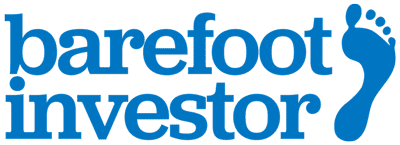How to Invest in Shares With No Risk
Hi Scott,
My partner and I are quite young (both 28) and have bought our first home already. We are now looking to invest in the share market, and would like to take out a ‘protected equity loan’ to do so. Yes, the cost of it is high, but after that you own the asset. We are in it for capital growth over time, so we can accept breaking even for 10 years or so, particularly with the potential for tax minimisation. The trouble is, I know you do not think highly of this product. Could you please explain why?
Angie
Hi Angie,
On first glance these things look like the best thing since sliced (gluten-free) bread.
Here’s how Westpac describe their protected equity loan:
“The potential of Australian shares. The certainty of capital protection at maturity.”
Let’s say you take out a Westpac protected equity loan of $1,000 and invest in an Aussie share fund. If in five years’ time the shares are worth less than $1,000, all you need to do is hand them back to Westpac, and just walk away Renee (or Angie -- word up to those 90s kids who got that music reference).
Hot diggity dang! Who doesn’t want the potential of shares with the certainty that you won’t do your dough?
Sign me up!
Trouble is, there’s no free lunch in the stock market, and Westpac sure ain’t handing out gluten-free dinner rolls.
The devil with these loans is the interest rate you’re charged. Westpac builds in the cost of the capital protection (otherwise known as a ‘put option’), then adds a bit of gravy.
How much gravy?
Well, Westpac charges an interest rate of 8.95%.‘Trời ơi!’, as my Vietnamese friends say.
Bottom line?
These fancy loans are dreamt up by bankers and flogged by financial planners with one goal: to make them fat ongoing fees … not to help you.I’ve been Barefoot for years now, and I’ve come to understand a few things:
First, most people make dumb decisions just to save tax.
Second, most people don’t have the ticker to invest in the market with their own money, let alone with borrowed money.
Third, most people borrow at the wrong time. Like right now, when the market has been going up for over a decade and everything appears ‘safe’. The time to go ‘balls in’ (as my father would say) is straight after a crash, precisely when no one wants to invest in the share market.
So what should you do?Stick to the Barefoot Steps.You’ve bought your home at a young age -- well done!
That’s Step 4 done and dusted. Now it’s time to move on to Step 5 and increase your super contributions from the basic 9.5% (paid by your employer) to 15% by salary-sacrificing some of your pay packet (up to the $25,000 cap per person per year).This has two benefits:
You’ll get a genuine tax deduction (possibly slashing your top marginal tax rate by almost two-thirds) and, if you choose a super fund with ultra-low costs, your returns won’t be eaten away by some banking fairy.
Scott
